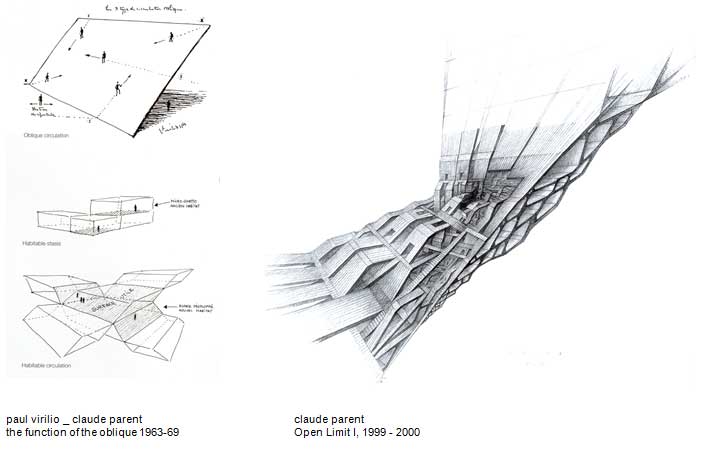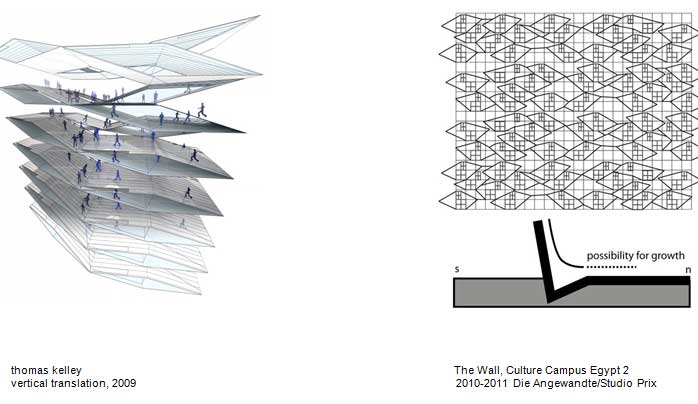Design Studio Required Elective at semester(s) 5, 7, ECTS: 12
Generic Competences: Ability to adapt to and act in new situations and cope under pressure, Ability to make reasoned decisions, Ability to work autonomously, Ability to work in a team, Capacity to generate new ideas (creativity), Ability to promote free, creative and inductive thinking.
Analysis, Synthesis, Evaluation
Inclined territories instigate the shift of the attention from stasis (rest) to the conscious movement. They are connected to geometries, that through the different mediums of art, theories of optical perception and architecture, propel us to explore the possibilities of creating new configurations and conditions of space. At the same time, perceived through the context of the city, they activate, via the human presence and action, ways of reinterpreting relations and disciplines of the built space.
The aim of the studio is to detect and explore the condition of inclined grounds (function of the oblique), through different scales, never the less focusing on the relations that sprout and evolve in the framework of the urban fabric.
The study of existing buildings, the observation of the city and the focus on programmatic elements that empower habitable circulation are suggested as a starting point for the research. The collection of that critical information, will structure a new [architectural] program that will be taking into account parameters such as geometry, embodied experience, human activities etc.

The intention is to explore intrinsic properties of the architectural design process given the thesis that:
- A work of architecture and spatial meaning are constructed through dense cross-modal design operations
- Analysis of built space can enlighten and enrich the way we formulate architectural intentions and thought
- Architectural forms are mainly explored through their fundamental property: configuring human performativity.
Α.
Select a building / spatial construction that exemplifies the 'function of the oblique'. Justify this selection, first in relation to your personal interests and second regarding the intrinsic characteristics of the building itself (program, form, circulation etc)
Creation of a common archive
Β.
Locate in the city conditions of inclined grounds. The focus of the interest shifts from the building to the relations and 'tensions' that are nested in the context of the urban fabric and the everyday life in it.
Typologies of inclined grounds
C.
Programmatic research and correlation with possible plots
Introduction to the meaning of metastability | habitable circulation_Virilio, Parent
D.
Final association of the programmatic and architectural intention to the plot
Ε.
The 'room' and the city [From Local to Global]
Creation of a collective map/model with the teams' proposals

Goodman N, 1992, How Buildings Mean, in the Philosophy of Visual Arts, Edited by P. Alperson, Oxford: Oxford University Press
Koolhas R, Mau B, Werlemann H, 1998, S,M,L,XL, The Monacelli Press
Koolhas R, Delirious New York: A Retroactive Manifesto of Manhattan, Rem, Academy Editions, London, 1978; republished, The Monacelli Press, 1994
Templer J, 1992a, The Staircase: Studies of Hazard, Falls and Safer Design (Cambridge, Mass.: MIT Press)
Templer J, 1992b, The Staircase: Histories and Theories (Cambridge, Mass.: MIT Press)
Virilio P, Parent C, 1997, architecture principe 1966 and 1996, Les Editions de l’ Imprimeur
Virilio P, Parent C, The Architectural Association, 1996, The function of the oblique, AA Publications, London
